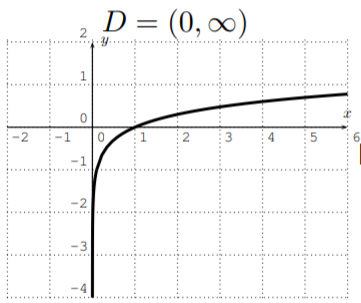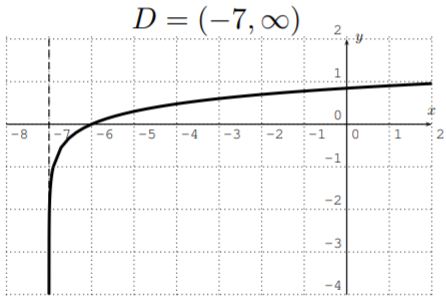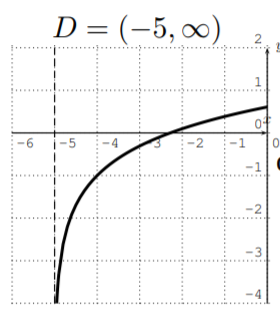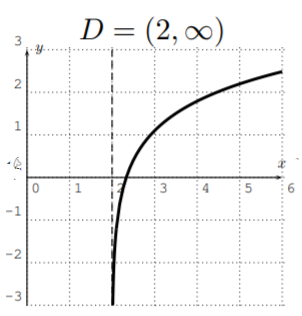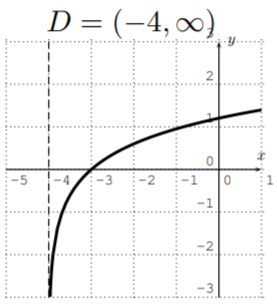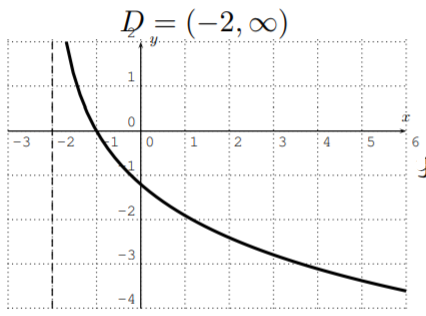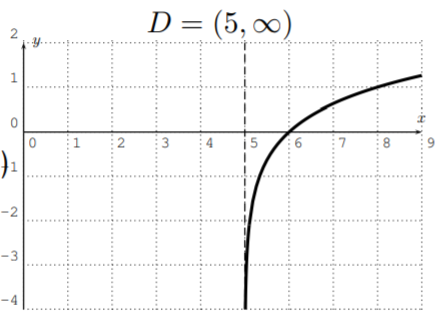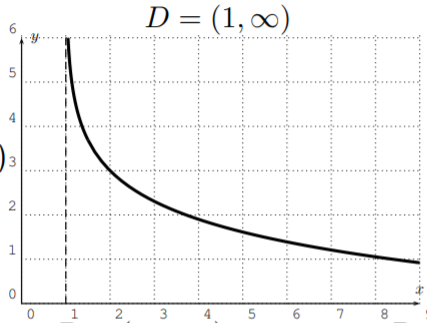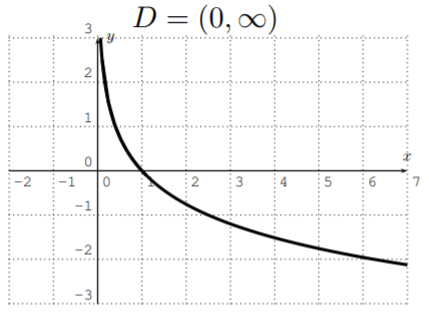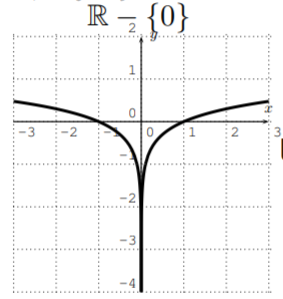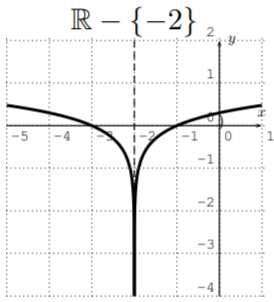13.3: Exercises
- Page ID
- 49033
\( \newcommand{\vecs}[1]{\overset { \scriptstyle \rightharpoonup} {\mathbf{#1}} } \)
\( \newcommand{\vecd}[1]{\overset{-\!-\!\rightharpoonup}{\vphantom{a}\smash {#1}}} \)
\( \newcommand{\dsum}{\displaystyle\sum\limits} \)
\( \newcommand{\dint}{\displaystyle\int\limits} \)
\( \newcommand{\dlim}{\displaystyle\lim\limits} \)
\( \newcommand{\id}{\mathrm{id}}\) \( \newcommand{\Span}{\mathrm{span}}\)
( \newcommand{\kernel}{\mathrm{null}\,}\) \( \newcommand{\range}{\mathrm{range}\,}\)
\( \newcommand{\RealPart}{\mathrm{Re}}\) \( \newcommand{\ImaginaryPart}{\mathrm{Im}}\)
\( \newcommand{\Argument}{\mathrm{Arg}}\) \( \newcommand{\norm}[1]{\| #1 \|}\)
\( \newcommand{\inner}[2]{\langle #1, #2 \rangle}\)
\( \newcommand{\Span}{\mathrm{span}}\)
\( \newcommand{\id}{\mathrm{id}}\)
\( \newcommand{\Span}{\mathrm{span}}\)
\( \newcommand{\kernel}{\mathrm{null}\,}\)
\( \newcommand{\range}{\mathrm{range}\,}\)
\( \newcommand{\RealPart}{\mathrm{Re}}\)
\( \newcommand{\ImaginaryPart}{\mathrm{Im}}\)
\( \newcommand{\Argument}{\mathrm{Arg}}\)
\( \newcommand{\norm}[1]{\| #1 \|}\)
\( \newcommand{\inner}[2]{\langle #1, #2 \rangle}\)
\( \newcommand{\Span}{\mathrm{span}}\) \( \newcommand{\AA}{\unicode[.8,0]{x212B}}\)
\( \newcommand{\vectorA}[1]{\vec{#1}} % arrow\)
\( \newcommand{\vectorAt}[1]{\vec{\text{#1}}} % arrow\)
\( \newcommand{\vectorB}[1]{\overset { \scriptstyle \rightharpoonup} {\mathbf{#1}} } \)
\( \newcommand{\vectorC}[1]{\textbf{#1}} \)
\( \newcommand{\vectorD}[1]{\overrightarrow{#1}} \)
\( \newcommand{\vectorDt}[1]{\overrightarrow{\text{#1}}} \)
\( \newcommand{\vectE}[1]{\overset{-\!-\!\rightharpoonup}{\vphantom{a}\smash{\mathbf {#1}}}} \)
\( \newcommand{\vecs}[1]{\overset { \scriptstyle \rightharpoonup} {\mathbf{#1}} } \)
\( \newcommand{\vecd}[1]{\overset{-\!-\!\rightharpoonup}{\vphantom{a}\smash {#1}}} \)
\(\newcommand{\avec}{\mathbf a}\) \(\newcommand{\bvec}{\mathbf b}\) \(\newcommand{\cvec}{\mathbf c}\) \(\newcommand{\dvec}{\mathbf d}\) \(\newcommand{\dtil}{\widetilde{\mathbf d}}\) \(\newcommand{\evec}{\mathbf e}\) \(\newcommand{\fvec}{\mathbf f}\) \(\newcommand{\nvec}{\mathbf n}\) \(\newcommand{\pvec}{\mathbf p}\) \(\newcommand{\qvec}{\mathbf q}\) \(\newcommand{\svec}{\mathbf s}\) \(\newcommand{\tvec}{\mathbf t}\) \(\newcommand{\uvec}{\mathbf u}\) \(\newcommand{\vvec}{\mathbf v}\) \(\newcommand{\wvec}{\mathbf w}\) \(\newcommand{\xvec}{\mathbf x}\) \(\newcommand{\yvec}{\mathbf y}\) \(\newcommand{\zvec}{\mathbf z}\) \(\newcommand{\rvec}{\mathbf r}\) \(\newcommand{\mvec}{\mathbf m}\) \(\newcommand{\zerovec}{\mathbf 0}\) \(\newcommand{\onevec}{\mathbf 1}\) \(\newcommand{\real}{\mathbb R}\) \(\newcommand{\twovec}[2]{\left[\begin{array}{r}#1 \\ #2 \end{array}\right]}\) \(\newcommand{\ctwovec}[2]{\left[\begin{array}{c}#1 \\ #2 \end{array}\right]}\) \(\newcommand{\threevec}[3]{\left[\begin{array}{r}#1 \\ #2 \\ #3 \end{array}\right]}\) \(\newcommand{\cthreevec}[3]{\left[\begin{array}{c}#1 \\ #2 \\ #3 \end{array}\right]}\) \(\newcommand{\fourvec}[4]{\left[\begin{array}{r}#1 \\ #2 \\ #3 \\ #4 \end{array}\right]}\) \(\newcommand{\cfourvec}[4]{\left[\begin{array}{c}#1 \\ #2 \\ #3 \\ #4 \end{array}\right]}\) \(\newcommand{\fivevec}[5]{\left[\begin{array}{r}#1 \\ #2 \\ #3 \\ #4 \\ #5 \\ \end{array}\right]}\) \(\newcommand{\cfivevec}[5]{\left[\begin{array}{c}#1 \\ #2 \\ #3 \\ #4 \\ #5 \\ \end{array}\right]}\) \(\newcommand{\mattwo}[4]{\left[\begin{array}{rr}#1 \amp #2 \\ #3 \amp #4 \\ \end{array}\right]}\) \(\newcommand{\laspan}[1]{\text{Span}\{#1\}}\) \(\newcommand{\bcal}{\cal B}\) \(\newcommand{\ccal}{\cal C}\) \(\newcommand{\scal}{\cal S}\) \(\newcommand{\wcal}{\cal W}\) \(\newcommand{\ecal}{\cal E}\) \(\newcommand{\coords}[2]{\left\{#1\right\}_{#2}}\) \(\newcommand{\gray}[1]{\color{gray}{#1}}\) \(\newcommand{\lgray}[1]{\color{lightgray}{#1}}\) \(\newcommand{\rank}{\operatorname{rank}}\) \(\newcommand{\row}{\text{Row}}\) \(\newcommand{\col}{\text{Col}}\) \(\renewcommand{\row}{\text{Row}}\) \(\newcommand{\nul}{\text{Nul}}\) \(\newcommand{\var}{\text{Var}}\) \(\newcommand{\corr}{\text{corr}}\) \(\newcommand{\len}[1]{\left|#1\right|}\) \(\newcommand{\bbar}{\overline{\bvec}}\) \(\newcommand{\bhat}{\widehat{\bvec}}\) \(\newcommand{\bperp}{\bvec^\perp}\) \(\newcommand{\xhat}{\widehat{\xvec}}\) \(\newcommand{\vhat}{\widehat{\vvec}}\) \(\newcommand{\uhat}{\widehat{\uvec}}\) \(\newcommand{\what}{\widehat{\wvec}}\) \(\newcommand{\Sighat}{\widehat{\Sigma}}\) \(\newcommand{\lt}{<}\) \(\newcommand{\gt}{>}\) \(\newcommand{\amp}{&}\) \(\definecolor{fillinmathshade}{gray}{0.9}\)Graph the following functions with the calculator.
- \(y=5^x\)
- \(y=1.01^x\)
- \(y=\left (\dfrac 1 3 \right )^x\)
- \(y=0.97^x\)
- \(y=3^{-x}\)
- \(y=\left (\dfrac 1 3 \right )^{-x}\)
- \(y=e^{x^2}\)
- \(y=0.01^x\)
- \(y=1^x\)
- \(y=e^{x}+1\)
- \(y=\dfrac{e^x-e^{-x}}{2}\)
- \(y=\dfrac{e^x-e^{-x}}{e^x+e^{-x}}\)
The last two functions are known as the hyperbolic sine, \(\sinh(x)=\dfrac{e^x-e^{-x}}{2}\), and the hyperbolic tangent, \(\tanh(x)=\dfrac{e^x-e^{-x}}{e^x+e^{-x}}\). Recall that the hyperbolic cosine \(\cosh(x)=\dfrac{e^x+e^{-x}}{2}\) was already graphed in example hyperbolic-cosine.
- Answer
-
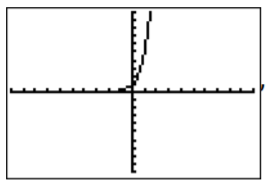
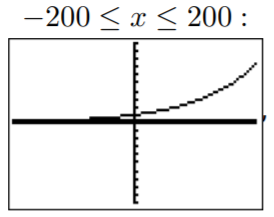
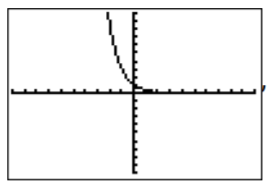
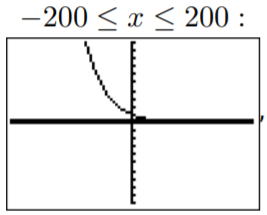
- same as c) since \(y=\left(\dfrac{1}{3}\right)^{x}=3^{-x}\)
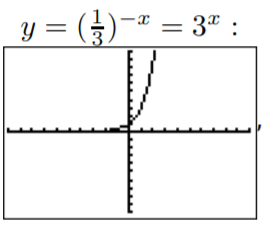
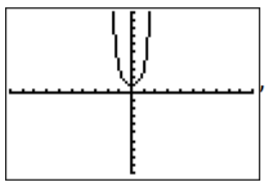

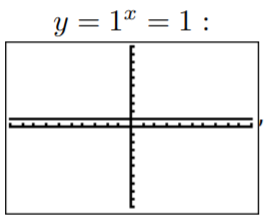
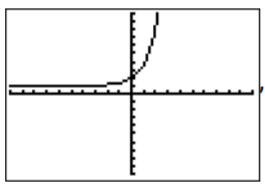
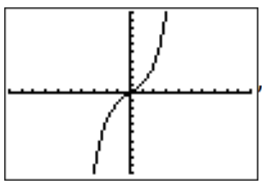
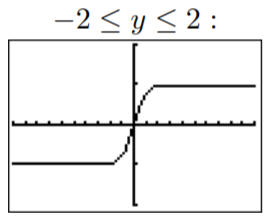
Graph the given function. Describe how the graph is obtained by a transformation from the graph of an exponential function \(y=b^x\) (for appropriate base \(b\)).
- \(y=0.1\cdot 4^x\)
- \(y=3\cdot 2^x\)
- \(y=(-1)\cdot 2^x\)
- \(y=0.006\cdot 2^x\)
- \(y=e^{-x}\)
- \(y=e^{-x}+1\)
- \(y=(\dfrac 1 2)^{x}+3\)
- \(y=2^{x-4}\)
- \(y=2^{x+1}-6\)
- Answer
-
- \(y=4^{x}\) is compressed towards the x-axis by the factor \(0.1\)
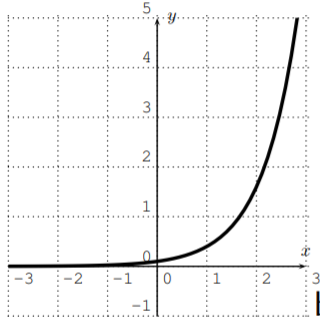
- \(y = 2^x\) stretched away from \(x\)-axis

- \(y = 2^x\) reflected about the \(x\)-axis
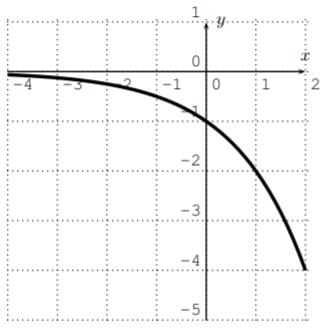
- \(y = 2^x\) compressed towards the \(x\)-axis
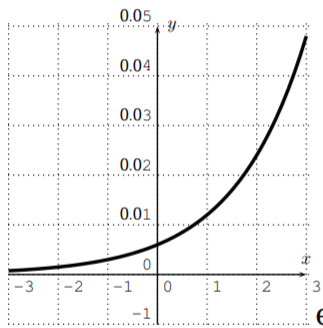
- \(y = e^x\) reflected about the \(y\)-axis
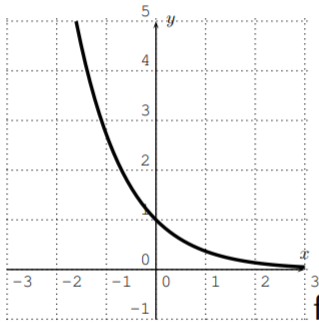
- \(y = e^x\) reflected about the \(y\)-axis and shifted up by \(1\)
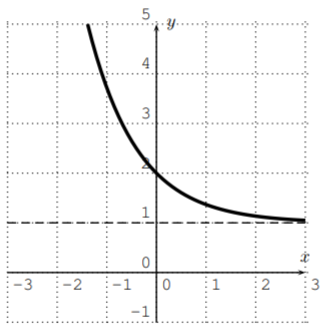
- \(y=\left(\dfrac{1}{2}\right)^{x}\) shifted up by \(3\)
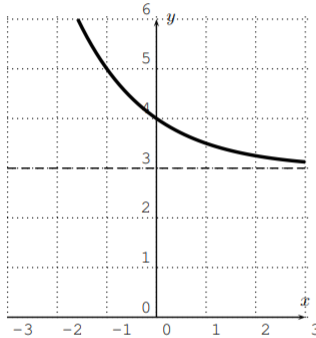
- \(y = 2^x\) shifted to the right by \(4\)
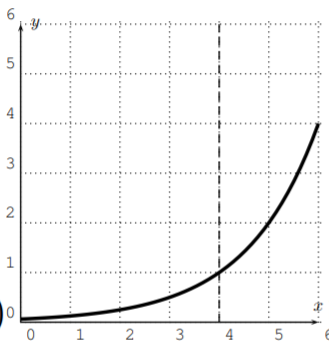
- \(y = 2^x\) shifted to the left by \(1\) and down by \(6\)
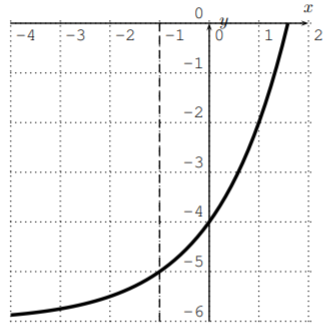
- \(y=4^{x}\) is compressed towards the x-axis by the factor \(0.1\)
Use the definition of the logarithm to write the given equation as an equivalent logarithmic equation.
- \(4^2=16\)
- \(2^{8}=256\)
- \(e^x=7\)
- \(10^{-1}=0.1\)
- \(3^x=12\)
- \(5^{7\cdot x}=12\)
- \(3^{2a+1}=44\)
- \(\left(\dfrac{1}{2}\right)^{\frac{x}{h}}=30\)
- Answer
-
- \(\log _{4}(16)=2\)
- \(\log _{2}(256)=8\)
- \(\ln (7)=x\)
- \(\log (0.1)=-1\)
- \(\log _{3}(12)=x\)
- \(\log _{5}(12)=7 x\)
- \(\log _{3}(44)=2 a+1\)
- \(\log _{\frac{1}{2}}(30)=\dfrac{x}{h}\)
Evaluate the following expressions without using a calculator.
- \(\log_7(49)\)
- \(\log_3(81)\)
- \(\log_{2}(64)\)
- \(\log_{50}(2,500)\)
- \(\log_2(0.25)\)
- \(\log(1,000)\)
- \(\ln(e^4)\)
- \(\log_{13}(13)\)
- \(\log(0.1)\)
- \(\log_6 \left (\dfrac 1 {36} \right)\)
- \(\ln(1)\)
- \(\log_{\frac 1 2}(8)\)
- Answer
-
- \(2\)
- \(4\)
- \(6\)
- \(2\)
- \(−2\)
- \(3\)
- \(4\)
- \(1\)
- \(−1\)
- \(−2\)
- \(0\)
- \(−3\)
Using a calculator, approximate the following expressions to the nearest thousandth.
- \(\log_3(50)\)
- \(\log_3(12)\)
- \(\log_{17}(0.44)\)
- \(\log_{0.34}(200)\)
- Answer
-
- \(3.561\)
- \(2.262\)
- \(−0.290\)
- \(−4.911\)
State the domain of the function \(f\) and sketch its graph.
- \(f(x)=\log(x)\)
- \(f(x)=\log(x+7)\)
- \(f(x)=\ln(x+5)-1\)
- \(f(x)=\ln(3x-6)\)
- \(f(x)=2\cdot \log(x+4)\)
- \(f(x)=-4\cdot\log(x+2)\)
- \(f(x)=\log_{3}(x-5)\)
- \(f(x)=-\ln(x-1)+3\)
- \(f(x)=\log_{0.4}(x)\)
- \(f(x)=\log_{3}(-5x)-2\)
- \(f(x)=\log|x|\)
- \(f(x)=\log|x+2|\)
- Answer
-



